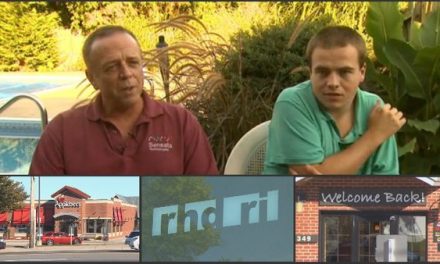Experts have long been aware that our childhood experiences play a part in cognitive development. To what degree, however, has not always been understood. Trauma inflicted on a child, whether physical or emotional, has lasting effects that can actually be seen on brain scans. Historically, emotional trauma hasn’t received the same airtime that physical trauma does, but it needs to. Emotional abuse as a child will likely have detrimental effects on a person’s ability to function normally as an adult.
RELATED STORY:
It’s easy to see bruises or black eyes, but it’s harder to see Post Traumatic Stress Disorder. PTSD, as it’s commonly known, can result from emotional abuse and neglect. People may think a child is just acting out or disobeying, but if they have PTSD, they may not be. In a side by side comparison, brain scans of an emotionally healthy child versus a neglected child, the scans show huge differences in both size and structure of each brain. Where a child has been emotionally traumatized, the brain is visibly much smaller, and there are noticeable spaces within the structure of the brain that do not appear in the healthy brain scans. One common observation in these brain scans is “cortical atrophy” a condition which is typically seen in Alzheimer’s patients. (1)
Get At It Early
If PTSD is not dealt with at an early age, it can greatly affect the development and functionality of the hippocampus in particular. Problems later down the road can include developmental delays, attachment issues (too clingy or too distant), out of control emotions, and problems with memory. (2)
In a study at Stanford University, Magnetic Resonance Imaging (MRI) was used to observe two groups of subjects, aged 10-17: there were 16 people with PTSD symptoms and 11 without. According to the study: “The hippocampus worked equally well in stressed and control subjects when the word list was first introduced. However, subjects with PTSD symptoms made more errors on the recall part of the test and showed less hippocampus activity than control subjects doing the same task.” (2)
RELATED STORY:
Subjects with the worst hippocampus function were also most likely to experience a specific set of PTSD symptoms. Such impairment of the hippocampus was strongly correlated with “avoidance and numbing” symptoms of PTSD, including difficulty remembering the trauma, feeling cut off from others, and lack of emotion.” (2)
Know Your Audience
This kind of information can be invaluable for teachers, and others in the position of caregiver to a small child. It may seem as though they are acting out or directly defying your requests, but it really may be that they simply cannot process what is happening in the moment. It may be that there is something wrong at home, or in another part of their life. Things that might not seem like triggers might have a huge effect on a child with PTSD. Understanding how emotional abuse or neglect may affect a child is important. Effectively diffusing a situation, should it arise, is key. It may also help get them the treatment they may really need.
RELATED STORY:
These days it is common knowledge that you don’t shake a baby, or hit them, or drop them. But in the past, there wasn’t as much understanding of the effects of emotional neglect. Science is catching up, and that’s a great thing. We’ve long known we’re social animals, we crave connection, but we’re now learning that it’s not just a craving… it’s a basic need. Like food, water, and shelter, another thing we desperately need is a place in the pack. We need leadership and nurturing. When we don’t receive that, the effects are noticeable. Not just when we are children, but possibly for our entire lives.
*Article originally appeared at Healthy Holistic Living. Reprinted with permission.












